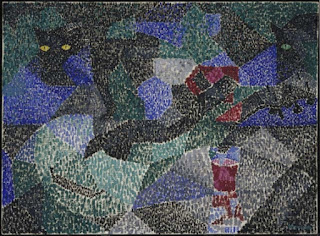Izima Kaoru: Kimura Yoshino wears Alexander McQueen #484 (2007)
Part of the Landscapes with a Corpse series
Galerie Andreas Binder (Munich)
No matter how we die, we will travel up to the world
beyond the sky without regretting how we lived
The phrase drop dead gorgeous, popular with necrophiles and thanatologists alike, also inspired the Japanese fashion photographer Izima Kaoru to stage elaborate death scenes featuring attractive models and well-known actresses dressed in expensive designer outfits that oblige viewers to consider the cultural fascination with the beautiful female corpse.
The sequence of images begin with wide-angle shots and gradually narrow to close-ups of the model. The resulting pictures look rather like film stills and remind us that there's nothing more cinematic than the death of a beautiful woman (to paraphrase Poe), although Kaoru's work demands to be contextualised within a wider art history; one that includes traditional Japanese woodcuts [Ukiyo-e].
It's also important to understand the influence of the Buddhist practice of maranasati - a musing on one's own mortality using various visualisation techniques - upon Kaoru's photography. Thus it is that, prior to taking any pictures, Kaoru asks his models to imagine the circumstances surrounding their deaths (where, when, how, etc.) and to consider also what would constitute the most sightly way of exiting this world (leaving behind a beautiful corpse is never an easy task).
In sum, Kaoru's pictures are a highly stylised and aesthetically pleasing form of what we in the West term memento mori and not merely images to do with fashion, sex, and cinema born of the floating world (though even if they were that alone, they'd still appeal to me).
Izima Kaoru: Kimura Yoshino wears Alexander McQueen #483 (2007)
Part of the Landscapes with a Corpse series
Galerie Andreas Binder (Munich)
See: Izima Kaoru, Landscapes with a Corpse, German and English text by Roy Exley, Yuko Hasegawa and Peter Weiermair, (Hatje Kantz, 2008), 192 pages, 171 colour illustrations.
See also the documentary film by Chad Fahs, Landscapes with a Corpse (2014), which follows Izima Kaoru on a journey to create new work and perhaps find the answer to the question of what best constitutes a beautiful death.
Readers interested in a sister post to this one - on Melanie Pullen's High Fashion Crime Scenes - should click here.
See also the documentary film by Chad Fahs, Landscapes with a Corpse (2014), which follows Izima Kaoru on a journey to create new work and perhaps find the answer to the question of what best constitutes a beautiful death.
Readers interested in a sister post to this one - on Melanie Pullen's High Fashion Crime Scenes - should click here.


























